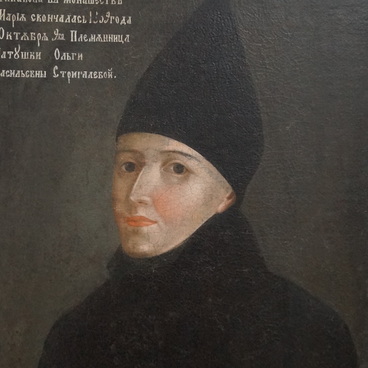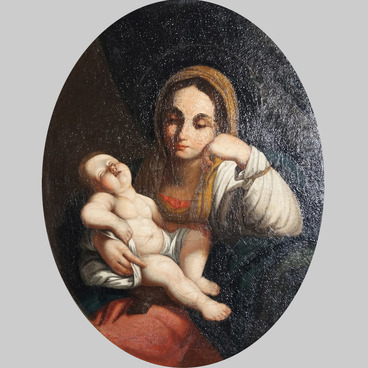The Borghese Gladiator drawing was made by an unknown artist. It is impossible to identify the artist of this drawing due to the fact that he was a serf. According to art historian Pyotr Kornilov, Alexander Stupin Art School was ‘the only source of artistic knowledge for serf talents’ in the early 19th century, which is why most works still have unknown authors. Serfs did not have many civil rights, including the right of authorship, and thus they couldn’t sign their own work.
Art lessons were mandatory for all pupils of Arzamas Art School. Two to four hours a day during the academic year were dedicated to these lessons. The complete course included a Drawing lines of any kind discipline along with copying originals, drawing plaster statues and models.
The pupils of Stupin School started to master the “drawing science” in several stages. Initially they developed their standard skills: sitting properly, holding a pencil and drawing lines, proceeding to work with “originals” right after. “Originals” was the name for prints from the paintings of the school’s brightest pupils and teachers. Drawing was considered ‘a basis of any art’.
During the first stage of copying, young artists reproduced engraved images depicting parts of human’s head and bodies. Over time, they gained practical experience: an ability to draw proportions and volume along with applying different techniques. The work was monitored by the head of the school and his assistant, so Alexander Stupin could assess the abilites of each mentee and develop a programme to train them further.
Since 1809, the Council of the Imperial Academy of Arts had the right to award medals to the school’s pupils and give feedback on the best works. At first they were selected by Stupin himself and later the Academy found ‘to its delight, good skills and great success of both mentor and his mentees, excessively meeting… its expectations which it has of the efforts and educational talents of new artists in the area’.In 1811, the Council included pieces made by Arzamas School’s pupils in the general annual exhibition for “display in public” — this reflects the recognition of their professional achievements.
The final stage was the drawing in life class. All the pupils who completed the training on “the science of art” became skilled painters and were no less skilled than graduates of the Academy of Arts.
The Arzamas Museum received “The Borghese Gladiator” painting for its collection in 1967. The painter used a form of execution called sanguine (from the French word sanguine and the Latin word sanguis, meaning 'blood'), in which sticks made from kaolin and iron oxides are used to draw with. The paper depicts a young warrior fighting a horseman. The Borghese Gladiator is the colloquial name for an antique statue sculpted by Agasias of Ephesus, a sculptor during the Hellenistic period.
Art lessons were mandatory for all pupils of Arzamas Art School. Two to four hours a day during the academic year were dedicated to these lessons. The complete course included a Drawing lines of any kind discipline along with copying originals, drawing plaster statues and models.
The pupils of Stupin School started to master the “drawing science” in several stages. Initially they developed their standard skills: sitting properly, holding a pencil and drawing lines, proceeding to work with “originals” right after. “Originals” was the name for prints from the paintings of the school’s brightest pupils and teachers. Drawing was considered ‘a basis of any art’.
During the first stage of copying, young artists reproduced engraved images depicting parts of human’s head and bodies. Over time, they gained practical experience: an ability to draw proportions and volume along with applying different techniques. The work was monitored by the head of the school and his assistant, so Alexander Stupin could assess the abilites of each mentee and develop a programme to train them further.
Since 1809, the Council of the Imperial Academy of Arts had the right to award medals to the school’s pupils and give feedback on the best works. At first they were selected by Stupin himself and later the Academy found ‘to its delight, good skills and great success of both mentor and his mentees, excessively meeting… its expectations which it has of the efforts and educational talents of new artists in the area’.In 1811, the Council included pieces made by Arzamas School’s pupils in the general annual exhibition for “display in public” — this reflects the recognition of their professional achievements.
The final stage was the drawing in life class. All the pupils who completed the training on “the science of art” became skilled painters and were no less skilled than graduates of the Academy of Arts.
The Arzamas Museum received “The Borghese Gladiator” painting for its collection in 1967. The painter used a form of execution called sanguine (from the French word sanguine and the Latin word sanguis, meaning 'blood'), in which sticks made from kaolin and iron oxides are used to draw with. The paper depicts a young warrior fighting a horseman. The Borghese Gladiator is the colloquial name for an antique statue sculpted by Agasias of Ephesus, a sculptor during the Hellenistic period.



